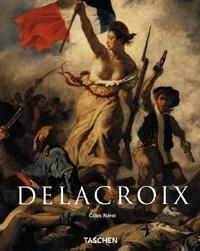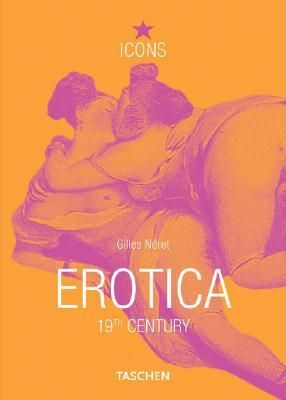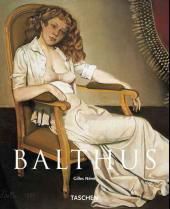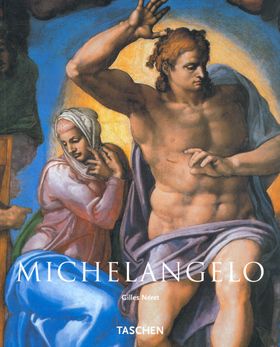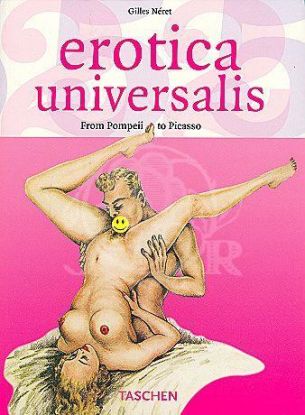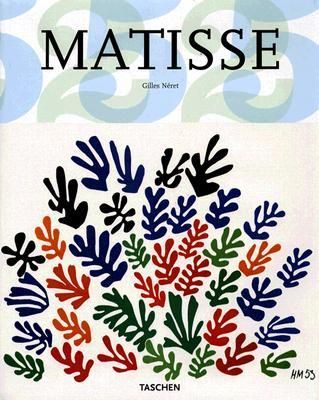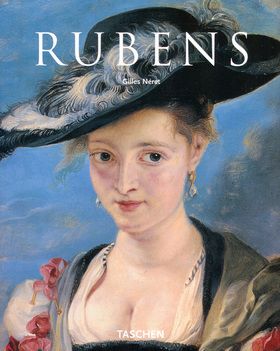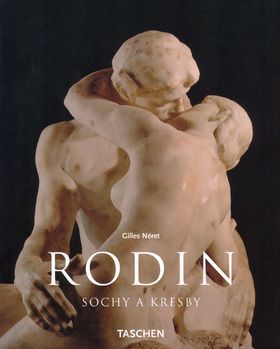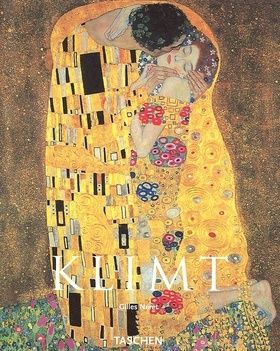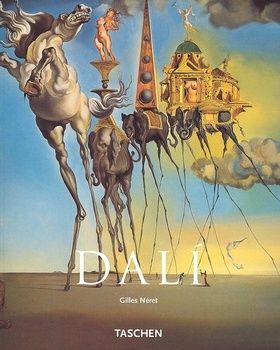Gilles Néret
autor
Eugéne Delacroix 1798-1863
"Az utolsó nagy reneszánsz mester és az első modern művész" - Baudelaire méltatta e szavakkal Delacroix-t. A költő nem csak azért tartja a festőt a művészettörténet élvonalbeli alakjaival egyenrangúnak, mivel Delacroix romantikushoz méltóan merész és eredeti, hanem mivel a hagyományokat tisztelve mert merész és eredeti lenni. ... Delacroix-ban felismerhető a romantikus életérzés minden tünete. Végletesen individualista lévén mindenekelőtt tudatállapotot, emberi érzelmeket kívánt kifejezni. Míg a klasszicista művész a kompozíció fegyelmezett, gondos kialakítására és pontos kivitelezésre törekedett, addig Delacroix színekkel kísérletezett, és a mozgás egyszerre ösztönös, feszültséggel teli, sőt drámai érzékeltetésére törekedett. Nem a felület aprólékos megmunkálása volt fontos számára, nem a finom színátmenetek, hanem sokkal inkább az éles kontrasztok izgatták, és az erőteljes ecsetvonásokat kedvelte. Csak a múltbéli remekműveken iskolázott nagy művész képes sikeresen elvetni a tanultakat, lefektetni új szabályokat és megmaradni a hagyományos kereten belül. Talán csak az tudja mindezt megtenni, akinek a példaképei szintén szakítottak saját korukkal.
Na sklade 1Ks
7,20 €
7,58 €
Gustav Klimt (1826 - 1918)
Jeho revolta proti akademizmu strhla koncom 19. storočia vlnu odporu. Bol terčom urážok, ale aj nadšeného obdivu. Pre jedných bol šíriteľom pornografie, pre iných zase otcom novej maľby. Rakúšan Gustav Klimt bol presvedčený, že umenie je o slobode.
Jeho maľba bola oslavou života, ale najmä ženy. On je moderným tvorcom tajomnej a dráždivej femme fatale osudovej ženy. Stal sa ikonou viedenskej secesie. Kto sa chce o mne ako umelcovi niečo dozvedieť, ten nech sa pozorne pozerá na moje obrazy a
z nich nech sa snaží poznať, čo som a čo chcem, povedal raz Klimt, ktorý zásadne odmietal autoportréty. Nerád sa opisoval. Nechával za seba rozprávať obrazy. Svojim obľúbeným témam však venoval maximálnu pozornosť. Ženy, život a smrť. Magický kalei
doskop, ktorý Klimt posunul do neznesiteľne ľahkého tanca.
Vypredané
12,30 €
12,95 €
Michelangelo
Michelangelo sa nikdy netajil tým, že jeho život ovládala vášeň. V jeho dielach hrajú dôležitú úlohu tváre mladých chlapcov. O tejto skutočnosti sa doteraz taktne mlčalo. Cenzúra sa dokonca snažila navždy vymazať Michelangelovu nemorálnu vášeň z histórie. Jeho diela ale hovoria jasne.
Vypredané
8,48 €
8,93 €
Erotica Universalis
From the dawn of time, ever since Adam and Eve, all artists of every age—whether the Egyptian, Greek and Roman artists of Antiquity, or more recent famous names as Rembrandt, Courbet, Degas or Picasso—have succumbed to their fantasies, obsessions and libido, and produced erotic works that the censors have taken good care to keep from the public. For Erotica, we surface from the subterranean realms of the museums to enter those of our national and private libraries. Here we discover that not only most of our famous writers, such as Ovid, Aretino, Voltaire, Verlaine or Maupassant, wrote erotic texts that bordered on indecency, but also that great artists like Boucher, Fragonard, Dalí or Matisse were inspired to provide suitable illustrations for these naughty books. For this special anniversary edition, we have culled highlights from our Erotica Universalis collection. A banquet for the imagination and a feast of the eye!
Vypredané
10,97 €
11,55 €
Matisse
The extraordinary significance of the painter and sculptor Henri Matisse in the history of modern art, but also his influence, was no less decisive than that of his main rival, PabloPicasso. In fact, Matisse’s stylistic liberation actually goes one step further in the pursuit of his own personal goal — the perfect synthesis of line and color — by which he sought revolutionary approaches to the great tradition of French painting by drawing upon its classical aspects. For those who wish to know more about this lodestar of modern art and follow the adventurous path of his creative career, this publication is surely the most comprehensive and informative source available. Lavishly illustrated, its authoritative commentaries trace the artist’s search for balance, purityand serenity, from the chromatic brilliance of his Fauve period, through his travels, the Orient, geometric synthesis (it was he who introduced Picasso to African art by givinghim his first mask), and the odalisques to the final triumph when, at the age of eighty, he invented his gouache cut-outs that culminated in his illustrations for Jazz and allowed him to achieve his goal of sculpting in paint just as a sculptor works in stone. Matisse is widely acknowledged as an artist whose canvases are extremely difficult to reproduce in print. With this in mind, each work presented here has been painstakingly compared with the respective original, in close collaboration with the artist’s grandson, Claude Duthuit. The bard of color deserves no less.
Vypredané
11,00 €
11,58 €
Klimt
Gustav Klimt's art is thoroughly fin de siecle. It expresses the apocalyptic atmosphere of Vienna's upper middle-class society - a society devoted to the cultivation of aesthetic awareness and the cult of pleasure. The ecstatic joy which Klimt and his contemporaries found - or hoped to find - in beauty was constantly overshadowed by death. And death therefore plays an important role in Klimt's art. Klimt's fame, however, rests on his reputation as one of the greatest erotic painters and graphic artists of his times. In particular, his drawings, which have been widely admired for their artistic excellence, are dominated by the erotic portrayal of women. Klimt saw the world "in female form".
Vypredané
11,00 €
11,58 €
Rubens
Umelecká produkcia Rubensa bola obrovská. V začiatkoch tvoril pod vplyvom manierizmu, no neskôr si vypracoval vlastný štýl. Šerosvit v jeho podaní má špecifickú formu. Mnohé z jeho obrazov sú chronicky známe. Gilles Néret, autor knihy, prináša ucelený pohľad na jeho dielo a život.
Vypredané
4,70 €
4,95 €
Rodin
Význam Rodina pre sochárske umenie zodpovedá významu van Gogha, Gauguina alebo Cézanna pre maliarske umenie. Jeho ateliér bol továrňou, v ktorej pracovalo 50 kamenárov, odlievačov a rezačov mramoru. Kniha sa zaoberá prierezom diela tohoto nesmrteľného umelca.
Vypredané
8,48 €
8,93 €
Klimt
Život a dílo rakouského malíře, významné osobnosti evropské secese a symbolismu, spoluzakladatele Vídeňské secese.
Vypredané
8,48 €
8,93 €
Salvador Dalí
""Jediný rozdíl mezi surrealisty a mnou je ten, že já jsem surrealista."" Salvador Dalí
Monografie jednoho z nejslavnějších výtvarných umělců 20. století.
Vypredané
8,48 €
8,93 €
Renoir 25 ju
Pierre-Auguste Renoir's timelessly charming paintings still reflect our ideals of happiness, love, and beauty. TASCHEN's Renoir: Painter of Happiness, the most comprehensive retrospective of his work yet published, examines the personal history and motivation behind the legend. Though he began by painting landscapes in the Impressionist style, Renoir (1841-1919) found his true affinity once he started painting portraits, after which he abandoned the Impressionists altogether. Though often misunderstood and criticized, Renoir remains one of history's most well-loved painters—undoubtedly because his works exude such warmth, tenderness and good cheer.
In an incisive text tracing the artist's career and stylistic evolution, Gilles Néret shows how Renoir reinvented the female form in painting, with his everyday goddesses and their plump forms, rounded hips and breasts. This last phase in Renoir's work, in which he returned to the simple pleasure of painting the female nude in his baigneuses series, was his most innovative and stylistically influential, and an inspiration to both Matisse and Picasso.
With a complete chronology, bibliography, index of works, and 600 sumptuous, large-format color reproductions, as well as photos and sketches illustrating Renoir's life and work, here is the essential work of reference on this enduring master artist.
Vypredané
20,85 €
21,95 €
Henri Matisse: "Cut-outs", "Jazz"
This two-volume edition includes a perfect facsimile of Matisse's seminal cut-out work. Jazz, the legendary album of twenty color prints with calligraphic text, recognized as a masterpiece among artist books of the 20th century.
The reputation of Henri Matisse (1869–1954) as the most important artist of the modern era is rivaled only by Picasso—who himself said, "All things considered, there is only Matisse." Towards the end of his monumental career as a painter, sculptor, and lithographer, an elderly, sickly Matisse was unable to stand and use a paintbrush for a longer period of time. In this late phase of his life – he was almost 80 years of age – he developed the technique of creating brightly colored paper cut-outs. These gouaches decoupées (gouache cut-outs) represented a revolution in modern art, yet their simplicity was dismissed by many critics as the folly of a senile old man. Later critics realized that Matisse had found a brilliant solution to the age-old conflict between line and color—one that would profoundly influence generations of artists to come.
Printed on paper similar to the 1947 edition, the facsimile volume allows readers to experience Jazz in its original, unbound form.
Dalí
Picasso called Dalí "an outboard motor that's always running." Dalí thought himself a genius with a right to indulge in whatever lunacy popped into his head.
Painter, sculptor, writer and film maker, Salvador Dalí (1904 - 1989) was one of the century's greatest exhibitionists and eccentrics - and was rewarded with fierce controversy wherever he went. He was one of the first to apply the insights of Sigmund Freud and psychoanalysis to the art of painting. Dalí brought extraordinary sensitivity, imagination and concern for precision to bear upon submerged levels of consciousness.
This lively biography presents the infamous Surrealist Dalí in full colour and in his own words. His provocative ideas are all here, from the soft watches to the notorious burning giraffe. And the fantastic phenomenon that was Salvador Dalí is grasped entire and placed in his various contexts.
Vypredané
10,97 €
11,55 €
